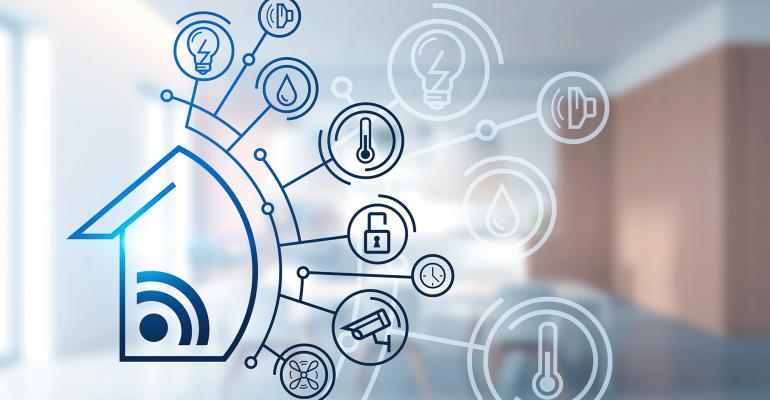The COVID-19 pandemic has left an indelible mark on the multifamily rental property industry, and some features of a rental property that might have previously been convenient have turned into necessities. Self-showing, for example, went from a novel idea used mainly by large rental companies to a feature adopted by almost all owners and managers. Although social distancing was behind the rapid transition to this and many similar practices and features in the rental property market, efficiency and cost savings have kept them going.
Now that vaccinations are more widespread and the worst of the pandemic is hopefully behind us, real estate investors need to shift their focus from reactive implementations to proactive solutions that will keep vacancies down and profits up. The best place to focus your attention? Green features that provide significant cost savings while appealing to younger renters with a deep interest in climate issues.
Green properties are the future of real estate investing
In a 2020 survey from the Pew Research Center, 60 percent of Americans said they saw the effects of global climate change as a significant threat to the U.S., and 63 percent reported that they were already seeing the impact of climate change in their communities. Older millennials are even more worried about the climate crisis, with 76 percent of people ages 33 to 40 worried about its societal impact.
As of 2019, the largest population of renters fell into a similar age group (between 35 and 44), making up some 8 million households. These individuals are already environmentally conscious, but as the climate crisis intensifies, it’s a safe bet that green multifamily rental property features will become even more important than they are today.
Implementing smart devices is one of the best ways to “greenify” rental properties. What’s more, data from Schlage and Wakefield Research indicates that 86 percent of Millennials are willing to pay more for rental properties equipped with smart technology. Real estate investors can not only make positive impacts on the environment and attract more renters, but they can also boost their ROI by investing in properties with the following energy- and money-saving features:
1. Smart thermostats.
HVAC is the biggest consumer of electricity in a typical building, amounting to 35% of total energy usage. Smart thermostats have proven to be an effective way to lower that figure, providing energy savings of as much as 32 percent. Add-ons, such as sensors that shut off the HVAC when a door or window is left open, can further increase the potential energy savings.
Smart thermostats are valuable for your property managers because they make it easier to manage HVAC costs and humidity levels in vacant properties. They also reduce vacancies by making properties more attractive to potential renters who are interested in lower heating and cooling bills. In fact, one report found that 32 percent of renters would be more interested in a unit if it came equipped with a smart thermostat.
2. Water leak detectors.
With extreme drought conditions impacting much of the American West, it’s increasingly clear that water is a precious resource. According to the Environmental Protection Agency, the typical household will leak as much as 10,000 gallons of water each year—amounting to almost 1 trillion gallons wasted nationwide. Water leak detectors, flow valves, and shut-off valves reduce this waste, but they also help protect major property investments. Water damage emergencies can cost thousands of dollars, and they impact around 14,000 Americans every day. A few inexpensive smart devices are money well-spent when it comes to protecting both your properties and the environment.
3. Keyless resident locks.
Physical keys are expensive—replacing them can cost anywhere between $100 and $400 and result in more energy and physical waste—and they’re not as secure as most people would like to think. Your property manager might give tenants two keys, but who knows how many copies renters make on their own? There could be an extra key “hidden” somewhere obvious, a few given to friends or exes, and some that were lost and never found.
When a new tenant moves in, it’s a good idea to rekey the locks, but that expense is easily avoided with keyless smart locks that simply give renters unique codes to gain access. Keyless entry also allows prospective tenants to look at your properties on their own, saving valuable time for your managers.
4. Solar power solutions.
For the U.S. to meet the decarbonization goals recently outlined by the Biden administration, solar will need to catapult from four percent to 40 percent of energy generation by 2035. The administration is proposing a variety of new tax credits for renewable energy generation, but solar is already a good investment for real estate investors around the country. The IRS currently offers a 26 percent residential solar tax credit that applies to both the purchase and installation costs of solar power solutions, and some utilities will buy back unused electricity generated by solar power. As consumers prioritize measures designed to protect the environment, solar panels are an attractive proposition, and they’ll become even more important as electric vehicles grow in popularity and increase household energy consumption.
It should come as no surprise that waste hurts wallets in addition to the environment—but that makes an even stronger case for real estate investors to go green. The four characteristics above highlight smart rental property investments, both because they’ll save money and energy and because they attract a growing group of environmentally conscious renters.
Sean Miller is president of PointCentral, a subsidiary of Alarm.com and the leader in enterprise property automation solutions for long- and short-term managers of single-family and multifamily rental properties. Outside of having a lifelong passion for technology, Mr. Miller has almost 10 years of professional experience with B2B and B2C IoT/home automation technology, having previously led global sales and business development for Wemo, Belkin’s home automation business unit, and launched Mobile Link, a cellular-based internet connectivity service for generators, at Generac Power Systems.





